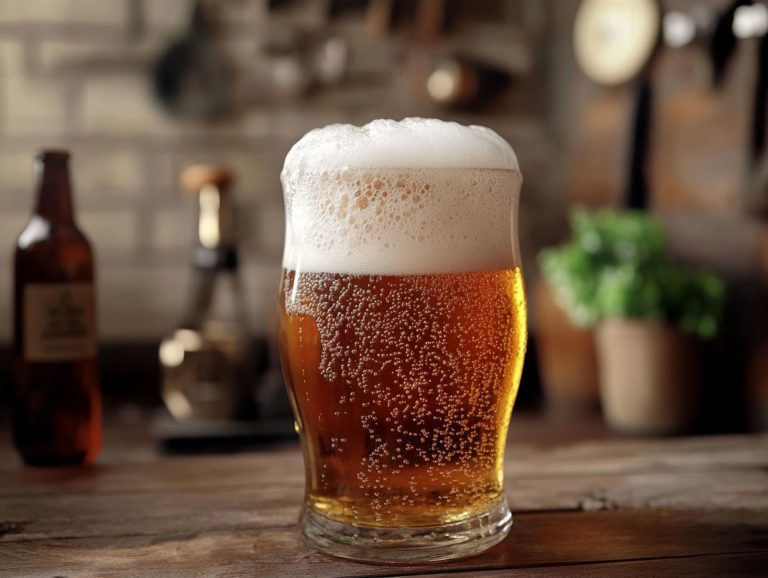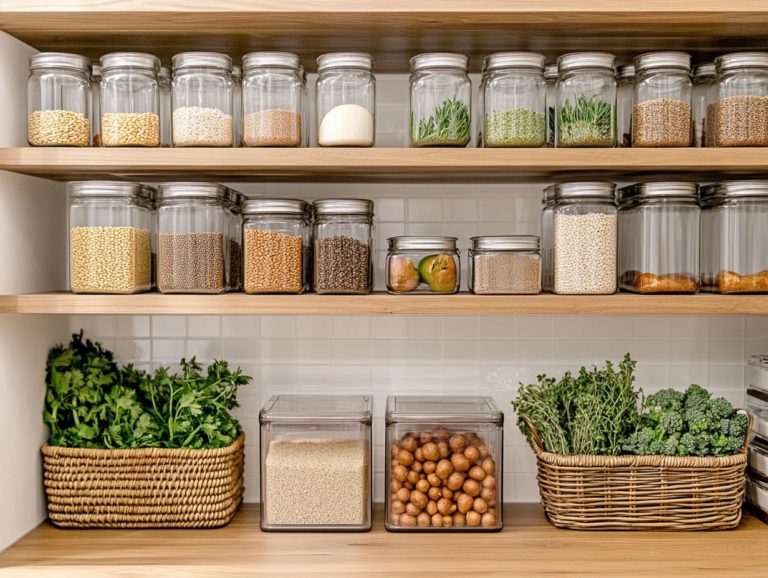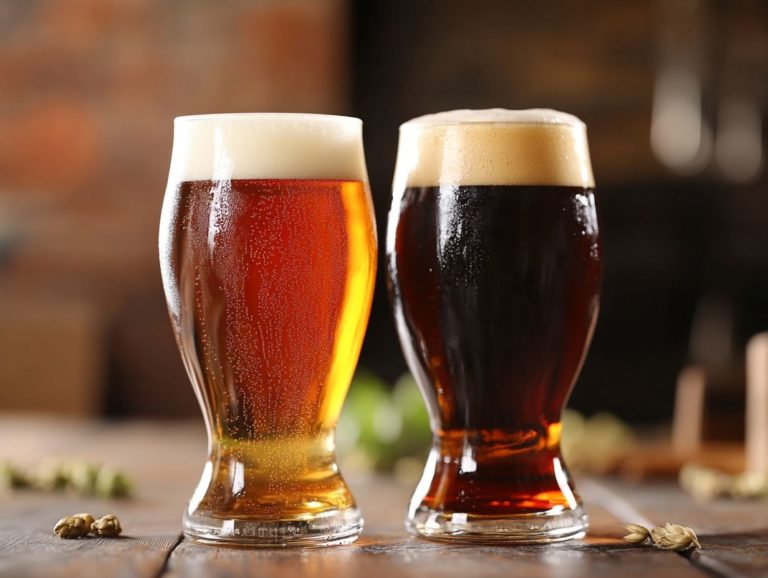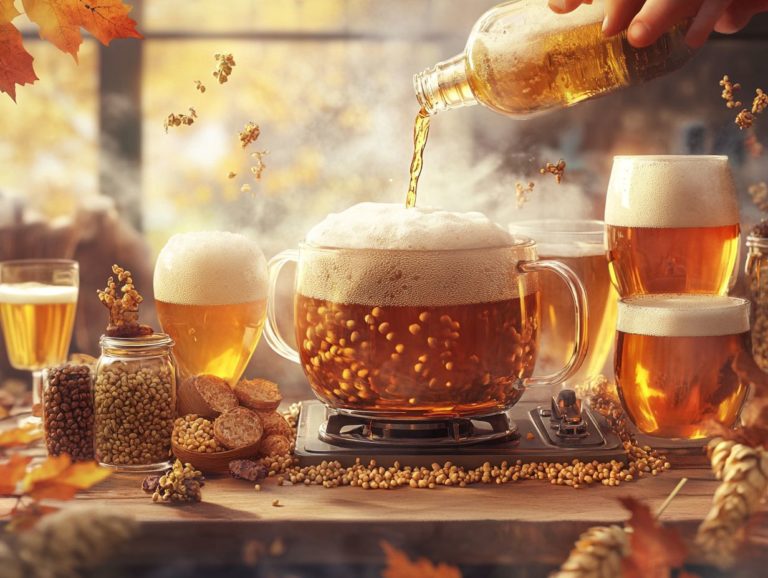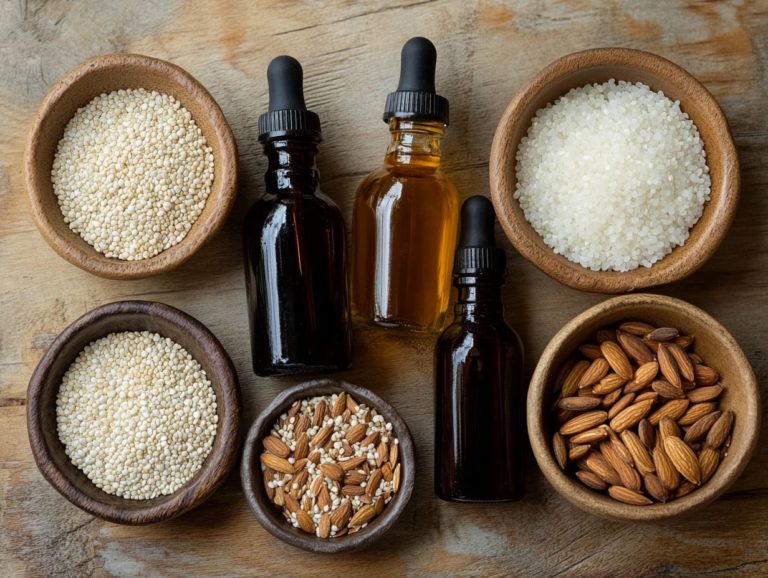How Do I Brew Beer at Altitude?
Brewing beer at high altitude introduces distinct challenges and opportunities that you should fully grasp. The elevation affects boiling points and yeast activity, making the art of crafting the perfect brew all the more complex.
This article delves into how altitude influences the brewing process, covering everything from the chemistry of ingredients to the intricacies of managing fermentation conditions.
Whether you re a seasoned brewer or just dipping your toes into this fascinating world, you’ll discover valuable tips, techniques, and potential pitfalls to navigate for a successful high-altitude brewing experience.
Contents
- Key Takeaways:
- What is Altitude?
- How Does Altitude Affect Beer Brewing?
- What Are the Challenges of Brewing Beer at High Altitude?
- How Can These Challenges Be Overcome?
- What Are the Tips for Brewing Beer at High Altitude?
- What Are the Best Yeast Strains for High Altitude Brewing?
- How Can Fermentation Temperatures Be Controlled at High Altitude?
- Frequently Asked Questions
- What is considered high altitude for brewing beer?
- How does altitude affect the brewing process?
- Do I need to adjust my brewing recipe for high altitude brewing?
- How can I prevent my beer from overcarbonating at high altitude?
- Does high altitude affect the type of yeast I should use for brewing?
- What are some tips for brewing beer at high altitude?
Key Takeaways:
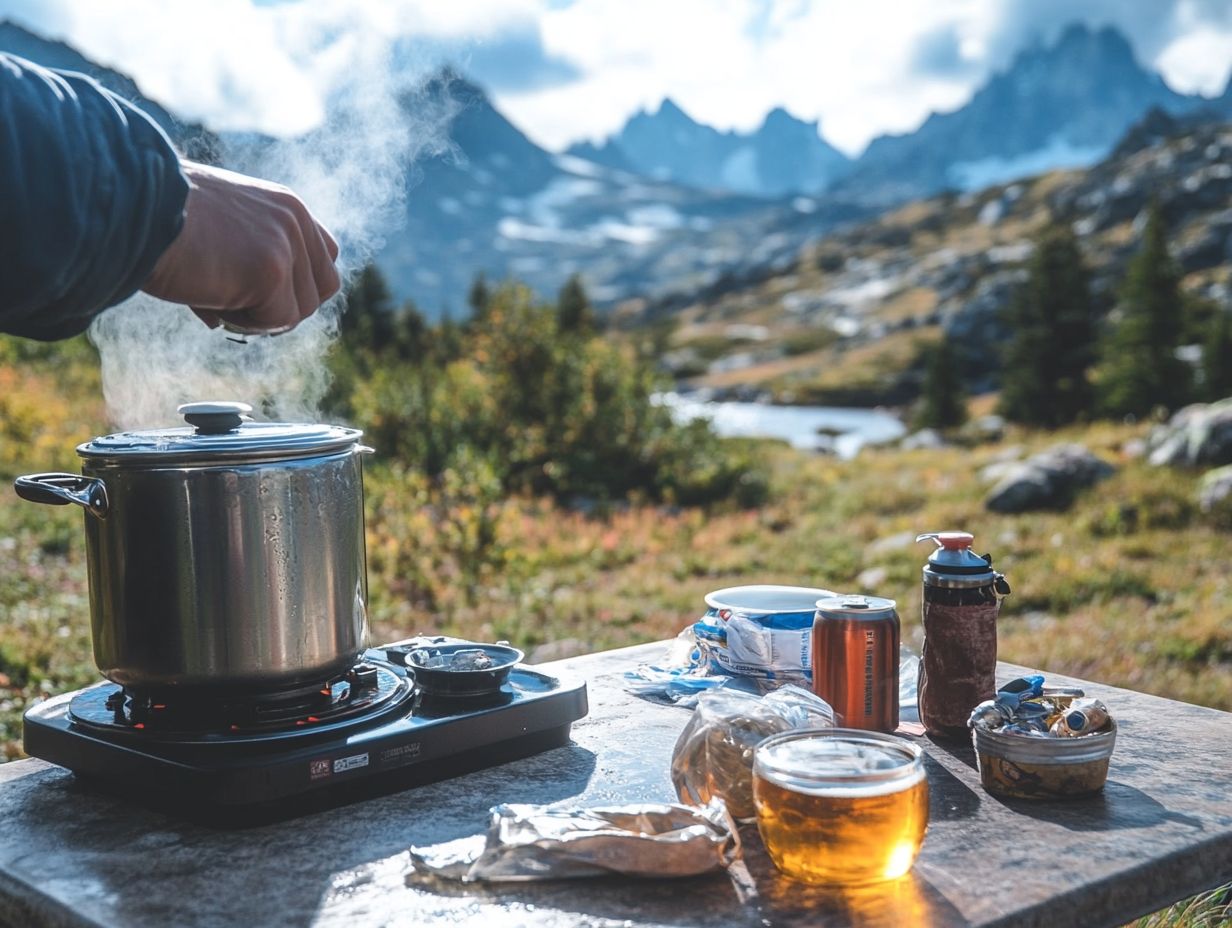
- The higher the altitude, the lower the boiling point, making it necessary to adjust techniques and ingredients for successful beer brewing.
- High altitude can impact yeast activity and fermentation, resulting in longer fermentation times and potential off-flavors in the beer.
- To overcome challenges of brewing at high altitude, brewers can adjust water chemistry, use specific yeast strains, and control fermentation temperatures.
What is Altitude?
Altitude represents the height of a specific location above sea level, a factor of paramount importance across several fields, including geography, aviation, and even the nuanced world of craft beer brewing.
In areas like the Colorado Rockies and high-altitude cities such as Fort Collins and Denver, the effects of elevation influence not just the environment but also the brewing techniques employed by local craft breweries.
The term ‘altitude’ spans a diverse range of heights, and at extreme elevations think Cusco in Peru the brewing challenges can profoundly affect the final product, altering characteristics such as flavor and alcohol by volume (ABV).
How Does Altitude Affect Beer Brewing?
Altitude significantly influences the beer brewing process, especially in high-altitude locations where the atmospheric pressure drops compared to sea level. This creates a set of unique brewing challenges that you must navigate.
If you’re brewing in areas like the Colorado Rockies, you’ll need to fine-tune your recipes and techniques to account for variations in boiling point and hop utilization. It’s essential to ensure that your final product maintains its quality and flavor profile, even at higher elevations.
Understanding the interplay of temperature, pressure, and brewing science is crucial for any brewing enthusiast aiming to craft exceptional beer under these distinct conditions.
What Are the Effects of High Altitude on Boiling Point?
At high altitudes, you ll find that the boiling point of water drops due to lower atmospheric pressure, which can have a profound impact on your brewing process and the extraction of flavors from your ingredients. This reality means you ll need to adapt your brewing techniques and parameters, as the standard boiling temperatures you rely on at sea level may not deliver the results you desire in elevated regions, like Colorado.
Understanding how pressure affects the boiling point is essential for you as a brewing enthusiast looking to perfect your craft beer recipes in high-altitude settings.
You should keep in mind that because water boils at a lower temperature, this can influence how efficiently you extract sugars and flavors from grains during the mashing phase. To address this, you might consider extending your mash times or increasing the amount of grains you use to ensure that you achieve adequate flavor extraction.
In terms of boiling hops, the lower boiling point can also lead to variations in bitterness and aroma, which means you ll need to experiment with your hop additions and timings. If you re aiming to create a balanced and flavorful brew, employing these necessary adaptations is key to overcoming the unique challenges that high-altitude brewing presents.
What Are the Effects of High Altitude on Yeast Activity?
High altitude can profoundly affect yeast activity during fermentation. This presents challenges that you must navigate to achieve your desired beer styles.
At elevated elevations, you might notice that yeast exhibits altered fermentation rates and behaviors. These changes occur due to fluctuations in atmospheric pressure and temperature, which can hinder the anticipated development of flavors and aromas in your craft beer.
If you re brewing in places like Fort Collins or Denver, it s crucial to be aware of these effects. Making informed adjustments to your recipes and fermentation practices will ensure optimal yeast performance and quality outcomes.
The decrease in oxygen levels and variations in gravity also significantly influence how yeast behaves at higher altitudes. This can lead to slower fermentation and the risk of producing off-flavors if not managed properly.
To tackle these challenges, consider strategies like using yeast strains specifically adapted to these conditions. Additionally, adjusting fermentation temperatures and increasing aeration during the brewing process can be beneficial.
By carefully monitoring and controlling fermentation metrics, you can mitigate undesirable effects and maintain your beer’s integrity. Ultimately, this will enhance its overall quality and ensure that your brewing vision comes to life.
What Are the Challenges of Brewing Beer at High Altitude?
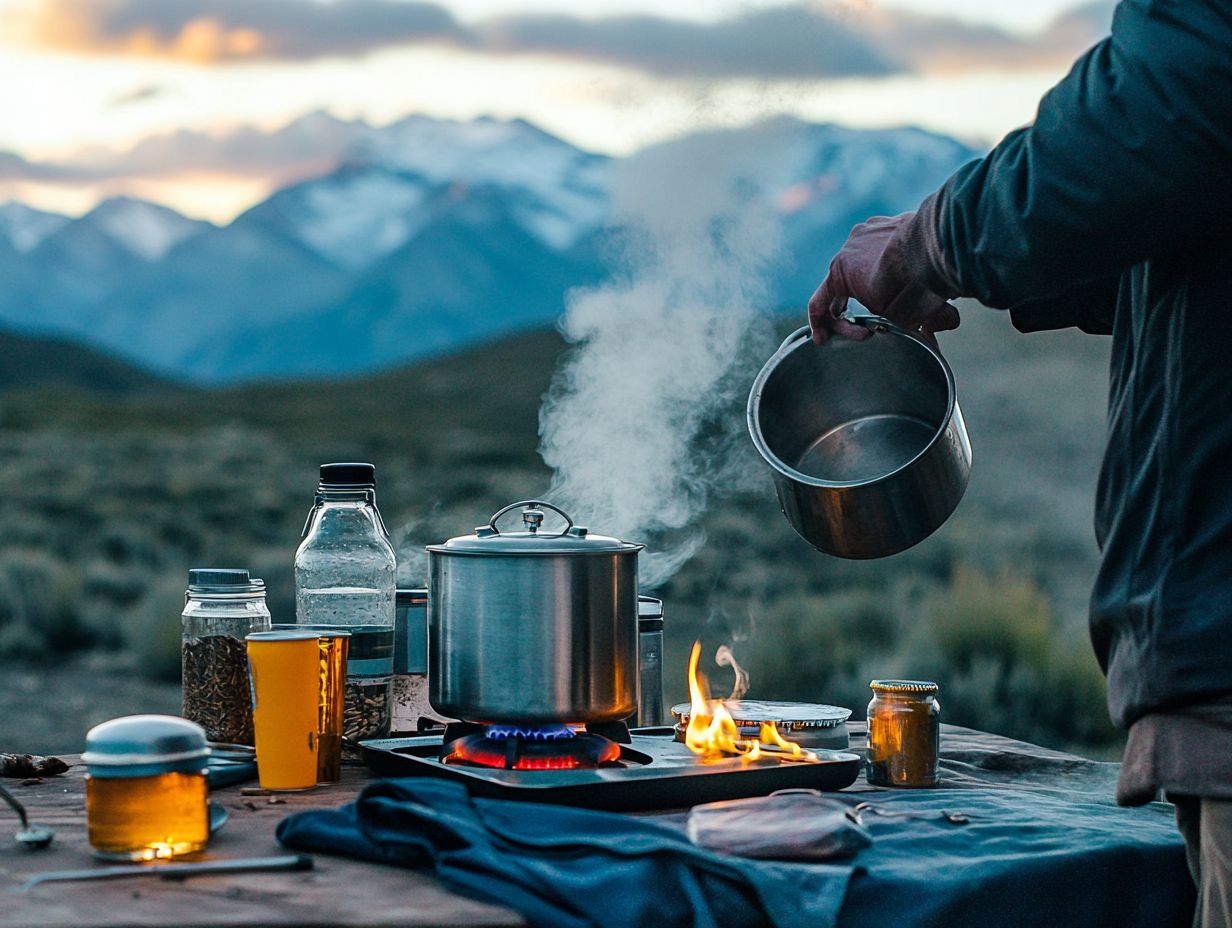
Brewing beer at high altitude introduces a distinctive array of challenges. These challenges can profoundly influence the entire brewing process, encompassing everything from ingredient selection to the quality of the final product.
In places such as the Colorado Rockies, you might face exciting challenges related to both equipment performance and ingredient behavior. All of this stems from reduced atmospheric pressure and the changed reactions that occur during brewing.
High altitude affects crucial elements, including the boiling point of water and yeast activity. This means you ll need to engage in meticulous planning and make necessary adjustments in your brewing practices.
This attention to detail is essential for crafting exceptional beer that not only delights the palate but also upholds the esteemed standards of the brewing community.
How Does High Altitude Affect Equipment and Ingredients?
High altitude can significantly impact both your brewing equipment and ingredients. As a result, you may need to make specific adjustments to maintain your brewing standards and quality.
With lower pressure at elevated elevations, certain brewing equipment operates differently. Ingredients can behave unpredictably, influencing flavor profiles in the final beer.
For craft breweries in Colorado, it s essential to be attuned to these nuances. By adapting brewing practices and equipment settings, you can ensure consistent results in your craft beer offerings.
In particular, you’ll notice that the boiling point of water decreases. Therefore, you must monitor temperatures carefully to avoid over-extraction of flavors.
You might also discover that your mash processes require longer times to achieve the desired conversions. Adjustments in hop additions could also be necessary to balance bitterness effectively.
Yeast performance can vary considerably. This may lead to fermentation challenges that alter the aroma and taste of your final product.
By utilizing equipment like pressure-compensating boil kettles or designing recipes that account for these variables, you can optimize your brewing operations at higher altitudes. This will help maintain the high-quality standards your customers expect.
In conclusion, understanding the effects of high altitude on brewing is vital. Embrace these unique challenges, adapt your techniques, and enjoy the distinct flavors your high-altitude craft beer can offer!
What Are the Common Issues Faced by Brewers at High Altitude?
As a brewer at high altitude, you often face a unique set of challenges that can disrupt the brewing process and impact the quality of your final product. You’re likely to encounter unpredictable fermentation rates, struggles to achieve desired boiling temperatures, and complications with hop utilization all due to the altered conditions at elevated elevations.
High altitude brewing changes the atmospheric pressure and temperature, resulting in rapid evaporation and inconsistency during the boiling phase. Maintaining the ideal 212 F for boiling can become quite the challenge, often necessitating that you modify your techniques to adapt to these conditions.
Yeast behavior can also be unpredictable, leading to fermentation that stalls or accelerates unexpectedly. To combat these issues, you might consider using specific yeast strains that are better suited for higher elevations.
By adjusting your boil times and ensuring proper hop additions, you can enhance flavor extraction and aroma, ultimately elevating your brewing outcomes. By understanding these nuances and adapting your methods accordingly, you can successfully craft high-quality brews even in challenging high-altitude environments.
How Can These Challenges Be Overcome?
Overcoming the challenges of brewing at high altitude demands that you adopt a suite of specialized techniques and adjustments tailored to your distinctive environment. By grasping how high altitude affects boiling points, yeast activity, and ingredient interactions, you can implement effective brewing strategies that ensure your products uphold quality standards.
Whether you find yourself modifying recipes or fine-tuning your brewing equipment, your understanding of brewing science, combined with insights from the brewing community, becomes an invaluable asset as you navigate the intricate landscape of high-altitude brewing in places like the Colorado Rockies.
What Techniques Can Be Used to Adjust for Boiling Point Differences?
To navigate the challenges of boiling point differences at high altitude, you can employ specific brewing techniques that optimize your brewing process and maintain the quality of your craft beer. Recognizing that the boiling point decreases with elevation, you, as a brewer in Colorado, can adjust by increasing the boil time or modifying hop additions to ensure the proper extraction of flavors, bitterness, and hop utilization.
Making recipe adjustments is crucial to successfully maneuver through the intricacies of high-altitude brewing, allowing you to produce craft beer that meets your standards while considering environmental factors and brewing parameters.
One effective technique involves altering the grain bill by adding more malt to enhance the body and flavor profile, compensating for the quicker evaporation rates at higher elevations. For instance, you might decide to increase the amount of caramel malt in your recipe, enriching the beer s sweetness and color, which is a common adjustment among brewing enthusiasts in high-altitude regions.
Additionally, reducing the hop quantity and shifting the timing of hop additions can help you achieve a balanced bitterness, even with a shorter boil duration. Local craft breweries, such as those in Fort Collins and Denver, have successfully showcased these adaptations, crafting distinctively robust stouts and pale ales, reflecting the resilience and creativity in their brewing processes that embody the unique qualities of their mountainous surroundings.
How Can Yeast Activity Be Managed at High Altitude?
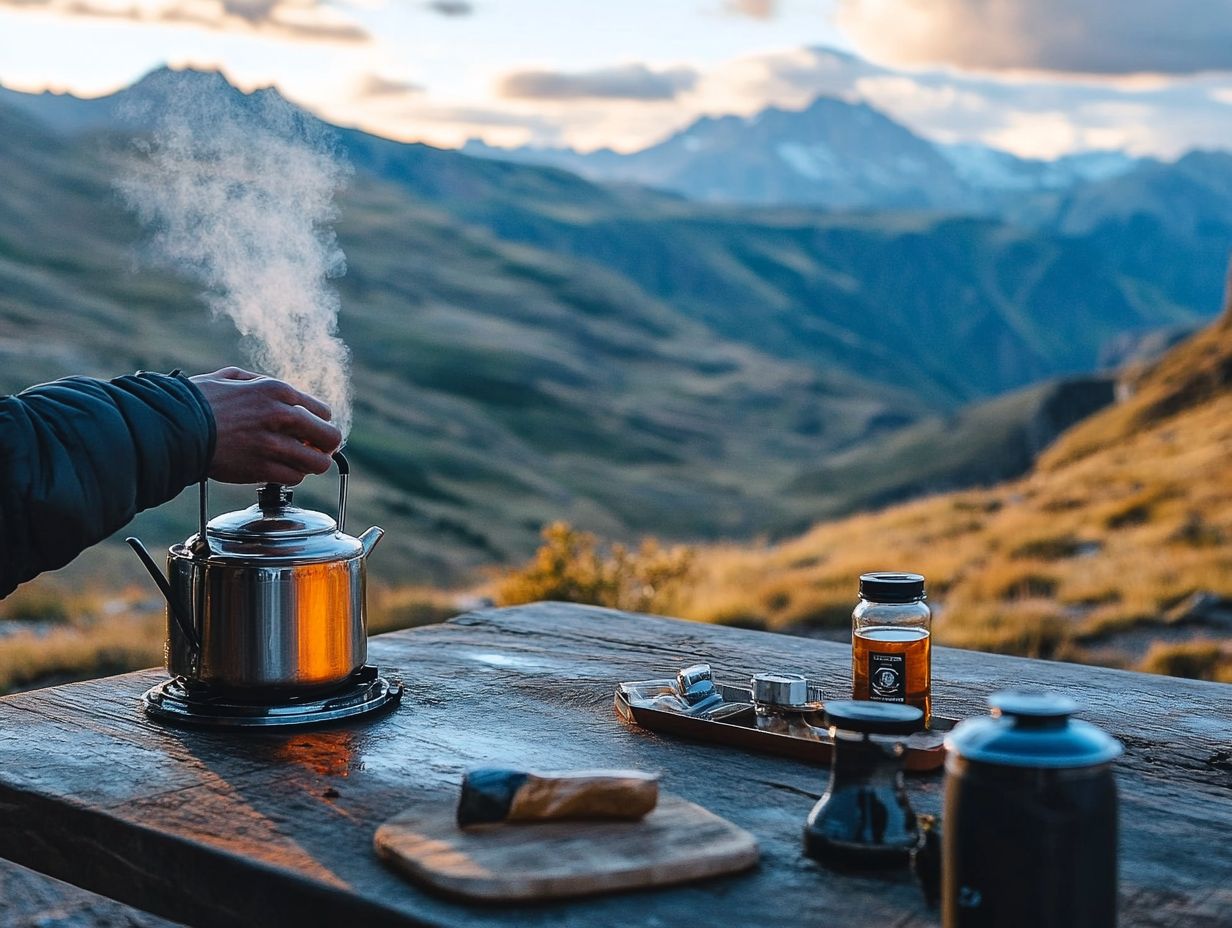
Managing yeast activity at high altitude is crucial for ensuring successful fermentation and enhancing overall brewing quality. The challenges of lower atmospheric pressure and thinner air can complicate the process.
You have several strategies to maintain consistent yeast performance. Consider selecting high-altitude yeast strains and controlling fermentation temperatures. Adjusting the pitch rate of yeast in your recipes can also help. By understanding the dynamics of yeast activity at elevation, you can elevate your fermentation processes and improve the final character of your beers.
One effective approach is to choose yeast strains specifically engineered for high-altitude conditions. These strains adapt better to the unique challenges posed by reduced oxygen levels and increased yeast activity.
Maintaining optimal temperature control throughout the fermentation process is essential. Diligently monitor and adjust temperatures to avoid unwanted off-flavors.
Applying careful techniques for adding yeast can foster a healthier fermentation environment. For instance, incrementally adding yeast to the wort can be beneficial.
By refining these elements, you can optimize yeast activity and achieve the flavor profiles you desire in your brews.
What Are the Tips for Brewing Beer at High Altitude?
Brewing beer at high altitude requires specific strategies. These methods refine your brewing techniques and elevate the quality of your final product. Start by adjusting your water chemistry to accommodate the unique mineral content found at elevation. Using water testing kits can help you understand your water s profile better.
Managing fermentation temperatures is crucial. This ensures that yeast activity remains steady and robust. Selecting the right yeast strains that thrive under these conditions can significantly enhance your brew, especially with the atmospheric pressure drop experienced at elevation.
These tailored brewing tips address the unique challenges of high-altitude brewing. They also enable you to craft exceptional beer styles that celebrate the vibrant brewing culture of regions like Colorado, including cities like Denver and areas in the High Rockies.
How Can Water Chemistry Be Adjusted for High Altitude Brewing?
Adjusting water chemistry is an essential step for you as a brewer at high altitude. It s crucial to ensure that your water’s mineral profile complements the brewing process and enhances the flavor of your beer. The mineral content in your water can significantly influence flavor extraction during brewing.
It s important to analyze the water you use and make necessary adjustments that align with your target beer styles. In high-altitude regions like Colorado, these considerations become even more critical, as altitude-related challenges can alter how your ingredients interact during brewing. Utilizing laboratory analysis can provide insights into your water chemistry.
At these elevations, the lower atmospheric pressure affects boiling points. This can lead to under-extraction of flavors if your brewing water isn t properly balanced. By employing methods such as water testing kits or laboratory analysis, you can pinpoint the mineral levels of your source water.
Identify which components calcium, magnesium, sulfate, and more need adjustments. By adjusting for these minerals, you can help achieve consistency in your brews.
The benefits of optimizing your water chemistry extend beyond just flavor. You can achieve consistency in your products, ultimately enhancing customer satisfaction. Through targeted adjustments, you have the opportunity to create unique brews that reflect the distinct characteristics of your environment while upholding high standards for brewing quality.
What Are the Best Yeast Strains for High Altitude Brewing?
Selecting the best yeast strains for high-altitude brewing is essential for achieving the fermentation outcomes you desire while maintaining the highest brewing quality. Prioritize strains that thrive in low-pressure environments and adapt to fluctuating temperatures typical at elevation. Wyeast and other suppliers offer specialized yeast strains tailored for high-altitude conditions.
By utilizing these specialized yeast strains, you can enhance your fermentation processes, creating unique flavors that truly celebrate the high-altitude brewing experience. Yeast viability remains high with these strains, even in challenging conditions.
The Kveik yeast, a traditional Norwegian yeast, is known for its ability to ferment at higher temperatures and produces clean, fruity esters that complement a variety of beer styles. The American Ale yeast is another excellent choice, showcasing efficiency in fermentation while delivering a balanced flavor profile that brings out the best in both hops and malts. Centennial hop varieties are popular among high-altitude brewers for their versatility.
By carefully selecting these yeast strains, you can ensure robust fermentation and improve yeast viability, ultimately crafting brews that reflect the essence of your breathtaking mountainous surroundings, such as those found in Colorado or the High Rockies.
How Can Fermentation Temperatures Be Controlled at High Altitude?
Controlling fermentation temperatures at high altitude is crucial for ensuring optimal yeast activity and producing exceptional craft beer. Given that temperature variations can be more pronounced in elevated locations, act quickly to implement temperature control strategies, such as insulated fermentation vessels or temperature-controlled fermentation systems, to maintain consistent conditions. This is especially important in areas like Fort Collins and Denver, where elevation can impact brewing.
Utilize advanced monitoring technologies, like temperature probes linked to smart brewing systems, which provide real-time data for precise adjustments during fermentation. Traditional practices, such as using cold water jackets or ice baths, can also effectively manage temperature fluctuations that often accompany the thinner air at higher elevations. These methods ensure your fermentation process remains stable, contributing to overall brewing consistency.
Employing these diverse methods not only supports robust yeast health but also elevates the overall brewing experience, resulting in unique and flavorful craft beers that truly stand out in a competitive market. With these techniques, you can maintain the high brewing standards expected by craft beer enthusiasts.
What Are Some Common Mistakes to Avoid When Brewing at High Altitude?
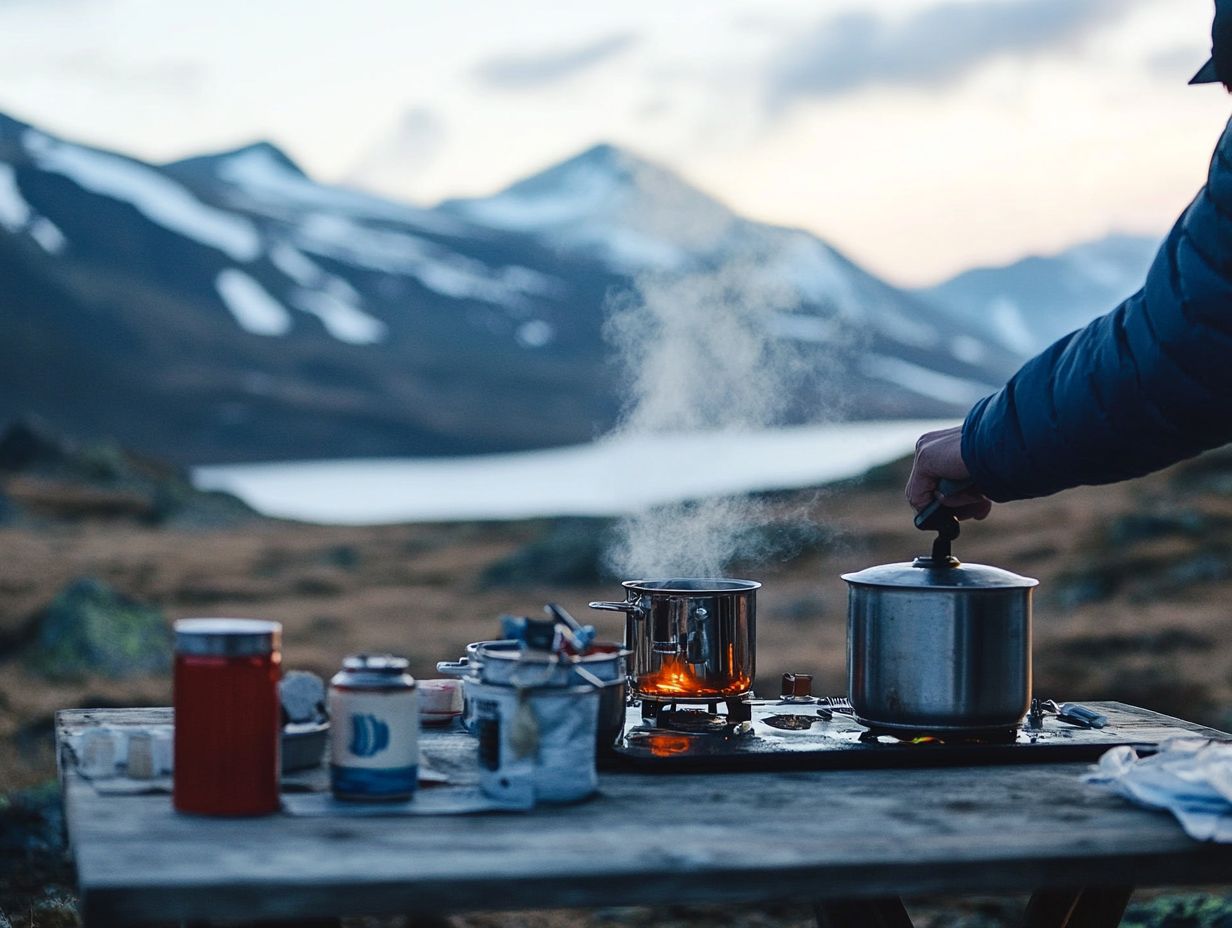
As a brewer at high altitude, it s crucial for you to recognize the common pitfalls that could negatively impact your beer s quality. Failing to adjust boiling times, neglecting necessary water chemistry modifications, and using inappropriate yeast strains can all lead to disappointing brewing results. These brewing challenges can undermine your efforts.
By understanding these mistakes and applying targeted brewing tips, you can refine your processes and craft premium beer that truly reflects the unique character of your high-altitude environment. Engaging with brewing insights from the community can further enhance your brewing experience.
First, keep in mind that the boiling point of water decreases with elevation. This means it’s essential for you to extend your boiling times to ensure proper hop utilization and sanitation. Breweries at sea level don’t face these specific challenges.
Water chemistry is another vital aspect; you may need to increase certain minerals to enhance flavor, compensating for the dilution often found in the thin mountain water. Additionally, selecting the right yeast strains is key, as many may struggle in lower oxygen environments, presenting unique fermentation challenges. This is particularly important given the water vapor content and mineral composition at high altitudes.
By carefully choosing your yeast and adjusting techniques such as rehydration and pitching rates you can significantly elevate the quality of your brews. Furthermore, engaging with local brewing communities can offer you invaluable insights and tried-and-true strategies, turning your brewing experience into a rewarding and educational journey. Renowned brewers like Matt Brynildson from Firestone Walker and Steven Pauwels from Boulevard can provide great insights.
Frequently Asked Questions
What is considered high altitude for brewing beer?
High altitude for brewing beer is typically above 3,000 feet, although some sources consider it above 5,000 feet. Altitudes above 7,000 feet are considered extreme altitude for brewing. Popular high-altitude brewing locations include Santa Fe, Cusco, and areas in the High Rockies.
How does altitude affect the brewing process?
Altitude affects the brewing process in several ways. The lower air pressure at high altitudes, such as in the Colorado Rockies, can cause water to boil at a lower temperature, which can affect hop utilization and the overall flavor of the craft beer. Additionally, the dry air at higher altitudes can cause faster evaporation and affect the final volume and ABV of the beer. Breweries like Periodic Brewery and South Park Brewing face these challenges regularly.
Do I need to adjust my brewing recipe for high altitude brewing?
Yes, brewing at high altitude may require some recipe adjustments. This can include using more hops to account for lower utilization, adjusting mash temperatures for proper enzyme activity, and using more water to account for evaporation. Brewing techniques like these are essential for maintaining brewing quality at elevation.
How can I prevent my beer from overcarbonating at high altitude?
To prevent overcarbonation, it is important to use a carbonation calculator that takes altitude into account. You may also need to use less priming sugar or extend the time for carbonation to occur. Monitoring the carbonation levels during the fermentation process can also help prevent overcarbonation. Brewing community forums, such as Craft Beer & Brewing Magazine, often share tips on managing carbonation at high altitudes.
Does high altitude affect the type of yeast I should use for brewing?
Yes, high altitude can affect the type of yeast you should use for brewing. The lower air pressure and dry air at high altitudes can cause yeast to behave differently, so it is important to choose a yeast strain that is suitable for high altitude brewing. Wyeast offers several strains that are effective for these conditions.
What are some tips for brewing beer at high altitude?
Ready to brew your best beer at high altitude? Here are some essential tips to get you started!
Use a carbonation calculator to measure the bubbles in your beer accurately. Adjust your recipe and choose a yeast strain that’s suitable for high altitude conditions.
Monitor the bubbles during fermentation. Be aware of faster evaporation and lower hop usage when brewing at high altitudes.
Renowned brewers like Andy Parker from Avery and Matt Brynildson from Firestone Walker have shared valuable insights. They emphasize the importance of having the right brewing equipment and precise measurements.

